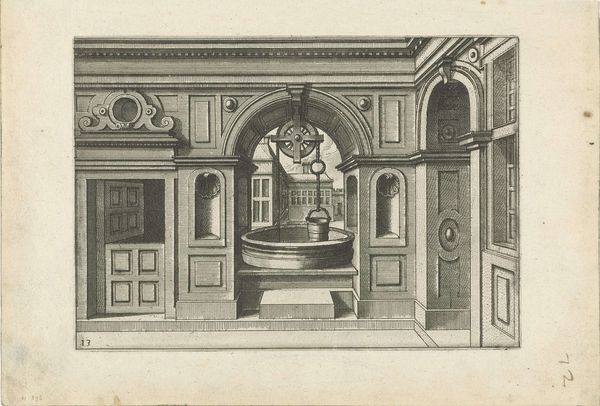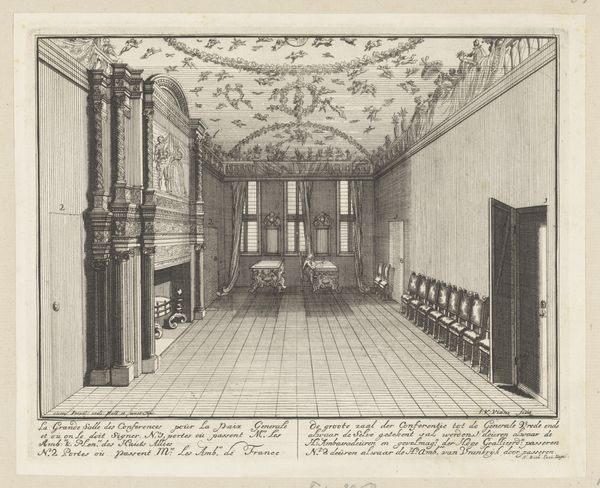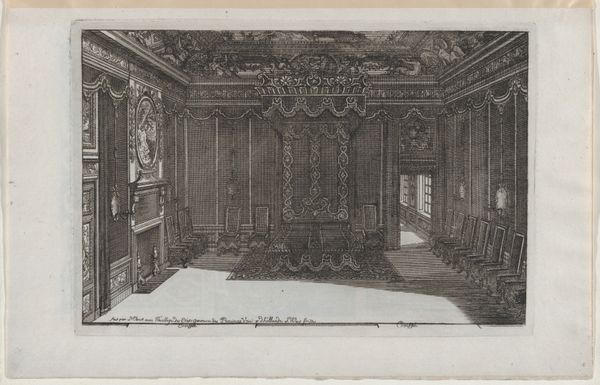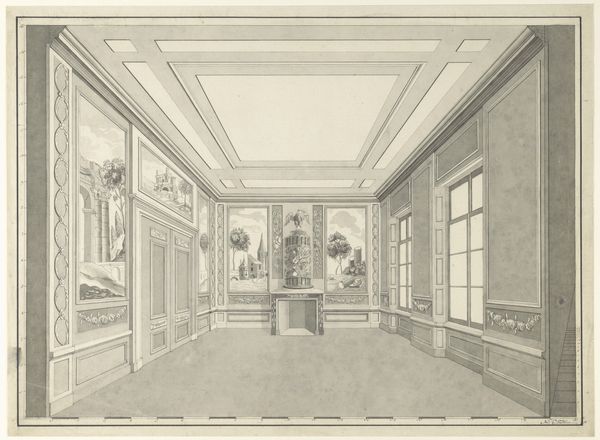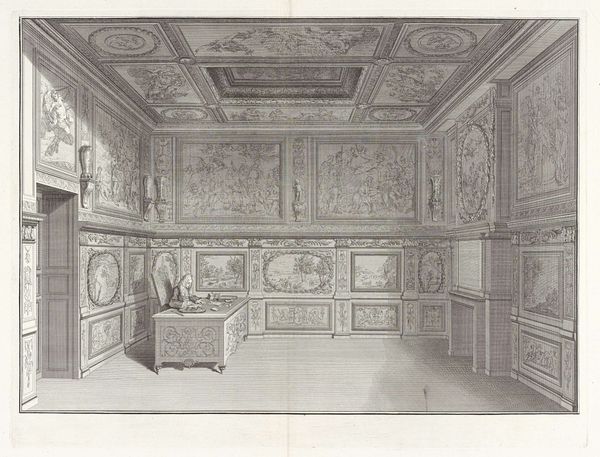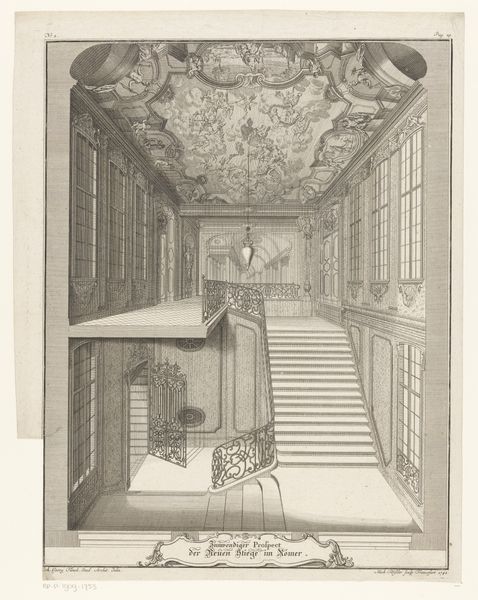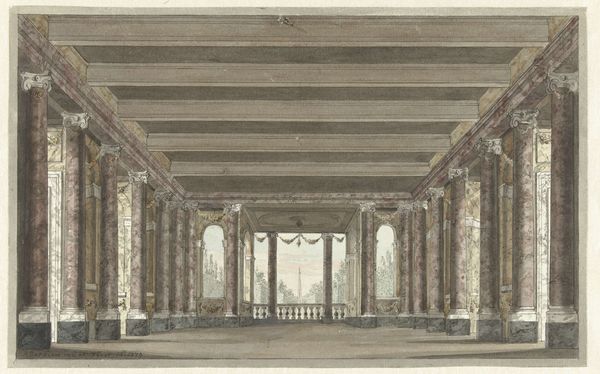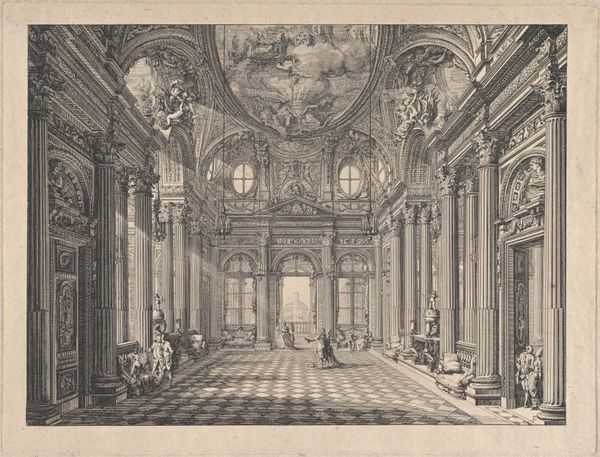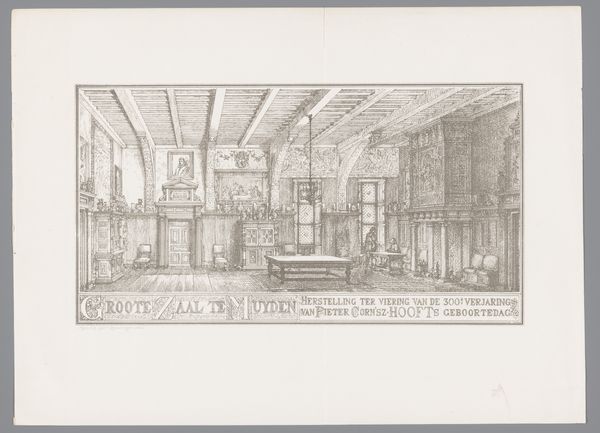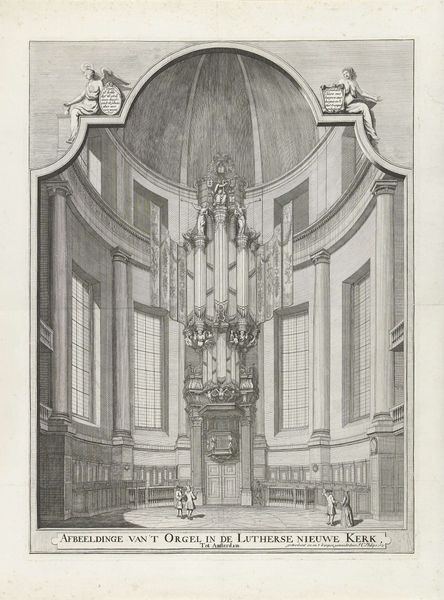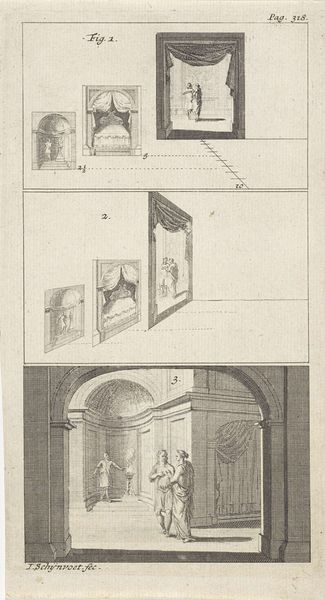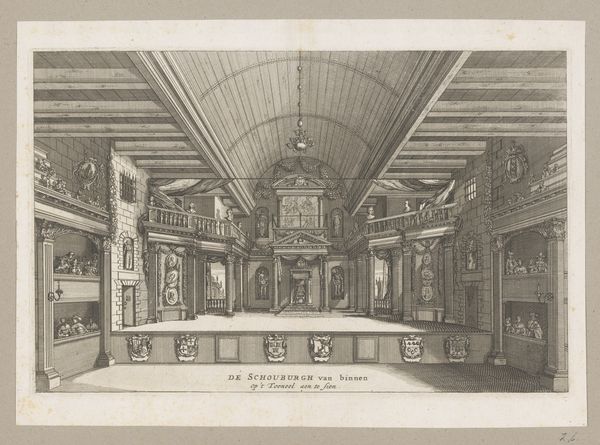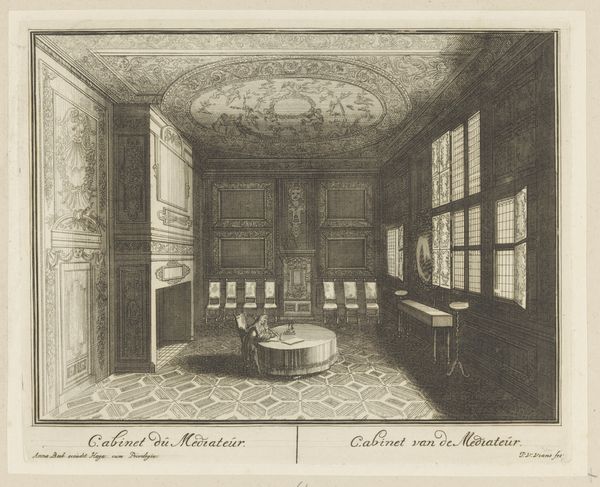
Interieur met het bewegende planetarium van Eise Eisinga in zijn huis te Franeker 1824
0:00
0:00
drawing, paper, pen
#
drawing
#
neoclacissism
#
perspective
#
paper
#
form
#
architectural drawing
#
line
#
architecture drawing
#
pen
#
cityscape
#
genre-painting
Dimensions: height 457 mm, width 511 mm
Copyright: Rijks Museum: Open Domain
Curator: Standing before us is "Interieur met het bewegende planetarium van Eise Eisinga in zijn huis te Franeker" or "Interior with the moving planetarium of Eise Eisinga in his house in Franeker," a drawing crafted in 1824 by Barentie Willem Dietz. It’s a precise rendering using pen on paper. Editor: Whoa, it feels like stepping into a mathematical dream. Everything pulls towards this perfect vanishing point. Makes my head spin a bit! It’s as if space itself is organized by rational thought. Curator: Indeed. Dietz masterfully employs linear perspective, channeling Neoclassical ideals of order and rationality. Note the architectural precision: each line delineates structure, from the tiled floor to the grand planetary model adorning the ceiling. Semiotics of form abound, wouldn’t you agree? Editor: Absolutely. And yet, this isn’t just cold geometry. The warm, shadowed corners soften the edges and there's a human element here too. Imagining that planetarium in motion...it's as if he’s mapped the infinite universe into a single domestic room. Curator: Precisely! It functions on several levels. At its core, we see a carefully rendered domestic space imbued with the scientific marvel of Eisinga’s planetarium, an achievement marrying art and science. Dietz's lines meticulously convey both architectural detail and abstract cosmological understanding. Editor: I wonder what it felt like to be in that space. You know, to live under the turning of the cosmos every day! A humbling reminder of one's place in something grander... almost overpowering when depicted in black and white. Curator: The restricted palette further distills our attention to the form, line, and arrangement. In this manner, the drawing functions as both record and reflection of humanity's place within cosmic mechanics. Editor: Looking at it now, it really feels like less of a representation and more like an encapsulation, preserving not just a visual scene, but an entire intellectual pursuit of its time. What a concept to translate time and space onto your own ceiling! Curator: A profound notion articulated elegantly within Dietz’s visual structure. The careful formal balance creates its sense of quiet contemplation. Editor: So, in this image of calm domesticity, Dietz actually managed to ignite my curiosity towards the stars.
Comments
No comments
Be the first to comment and join the conversation on the ultimate creative platform.
